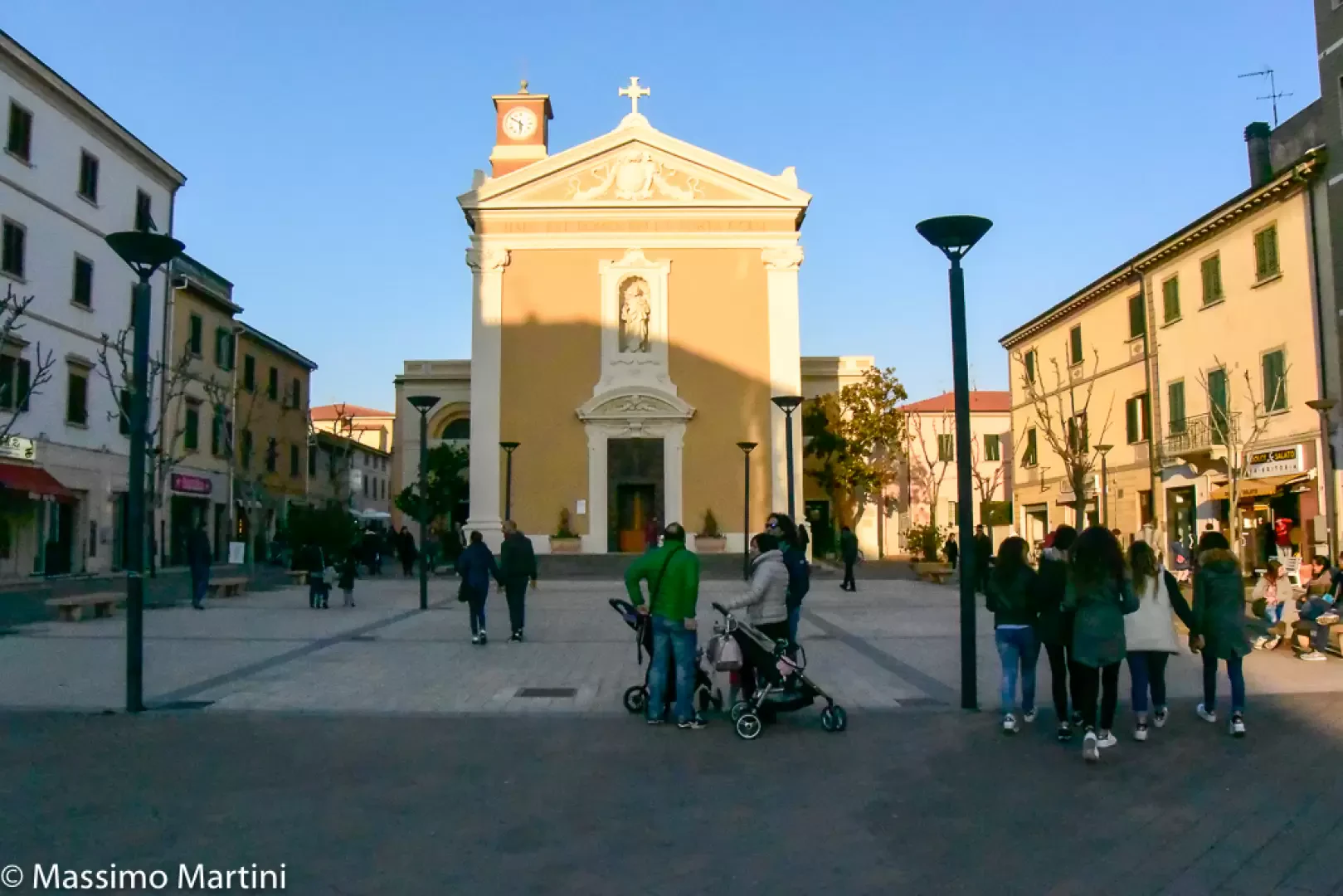Cecina

Introduction
Located in the southern part of the province of Livorno, Cecina lies on a flat strip along the Tyrrhenian coast, overlooking a wide, sandy stretch of coastline framed by thick maritime pine forests. Its territory stretches between the Ligurian Sea and the first hilly undulations that lead to the Val di Cecina, a historically fertile and strategic area. Its origins date back to Etruscan and Roman times, but it was mainly in the 19th century, thanks to the Grand Ducal reclamation works, that the modern town took shape. Today, Cecina is a lively tourist resort, popular for its seaside and nature offerings, as well as for its barycentric position between the sea and the art cities of the Tuscan hinterland.
Description
Cecina is a predominantly flat territory, shaped by the course of the river of the same name that flows from the east towards the sea, contributing to the fertility of the land and the variety of the landscape. Its coastline is characterised by sandy beaches and one of the largest coastal pine forests in Tuscany, that of Tombolo, now a protected area. The natural environment is rich in biodiversity and offers ideal settings for outdoor activities, from cycling to hiking in the coastal woods.
The history of Cecina is rooted in antiquity: inhabited as early as Etruscan times, it was an important junction during the Roman era, as demonstrated by the origin of its name, derived from the powerful gens Caecina. Traces of Roman settlements and villas, visible in the vicinity of San Vincenzino, are today preserved and enhanced by the Municipal Archaeological Museum. After a long period of depopulation and medieval decadence, Cecina's rebirth came in the 19th century, when Grand Duke Leopold II's land reclamation transformed the marshes into productive agricultural areas and gave way to the construction of the modern town, officially founded in 1852.
A crucial passage in Cecina's recent history is represented by the events of World War II. In 1944, the town became a strategic junction for the German and American armies: the ancient Via Aurelia, the Tyrrhenian railway and State Road 68 connecting the coast to the hinterland intersected here. Between 29 June and 2 July, the Allied troops clashed with strong German resistance in what some historians call the bloodiest battle sustained by the Americans since the conquest of Rome. Cecina paid a heavy price in terms of destruction and human lives. The Allied victory was followed by an event of great symbolic importance: in the pine forest of Cecina Mare, which had become the headquarters of the 5th Army, personalities of the calibre of General Mark W. Clark, Marshal Sir Harold Alexander, King George VI of England, Prime Minister Winston Churchill and Cardinal Spellman arrived.
Today, Cecina's economy is mainly based on tourism, a driving sector during the summer season, but also on trade, handicrafts and an agriculture that retains an important role, especially in the peripheral areas of the municipal territory. Marina di Cecina is the tourist hub, with accommodation facilities, bathing establishments, cycle paths and green areas that make the area attractive to families and sports enthusiasts. The Gallorose Park, located inland, is a popular destination for educational activities and direct contact with numerous animal species.
The local culture is expressed through events, festivals and popular traditions. The Palio della Costa Etrusca, the patron saint's festival of San Giuseppe, festivals dedicated to local products and summer events help to keep Cecina's identity alive. The cuisine is typical coastal Tuscan: the protagonist is fish, in dishes such as cacciucco (fish stew), but also legumes, olive oil and unsalted bread, symbols of an authentic, peasant gastronomic heritage.
Cecina is also an ideal starting point for excursions to the Alta Val di Cecina, Volterra, Casale Marittimo and the wine and food itineraries of the Etruscan Coast. The wine routes, medieval villages, archaeological and natural parks of the hinterland offer an integrated tourist network that enhances not only the sea, but also the culture and the Tuscan landscape in all its nuances.
Information
Area: 42.52 km²
Altitude:15m
Maximum elevation: Hills of Casale Marittimo - 115m
Number of inhabitants: 28152 (28.02.2015)
Name in dialect: Cecìna
Name in dialect: Cecinese
Patron Saint:St. Joseph, celebrated on March 19
Neighbouring towns: Bibbona, Casale Marittimo, Castellina Marittima, Guardistallo, Montescudaio, Riparbella, Rosignano Marittimo
Website: www.comune.cecina.li.it